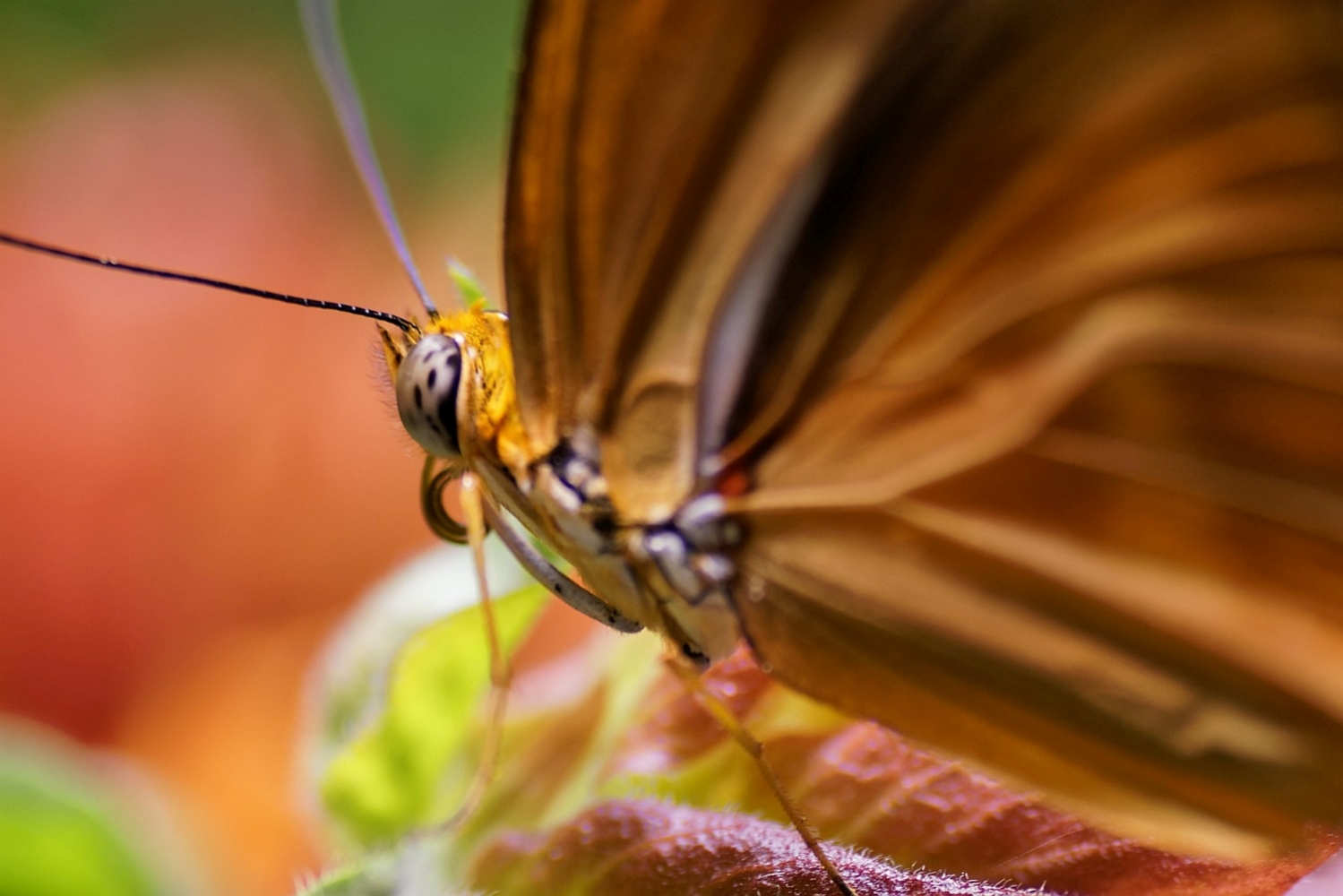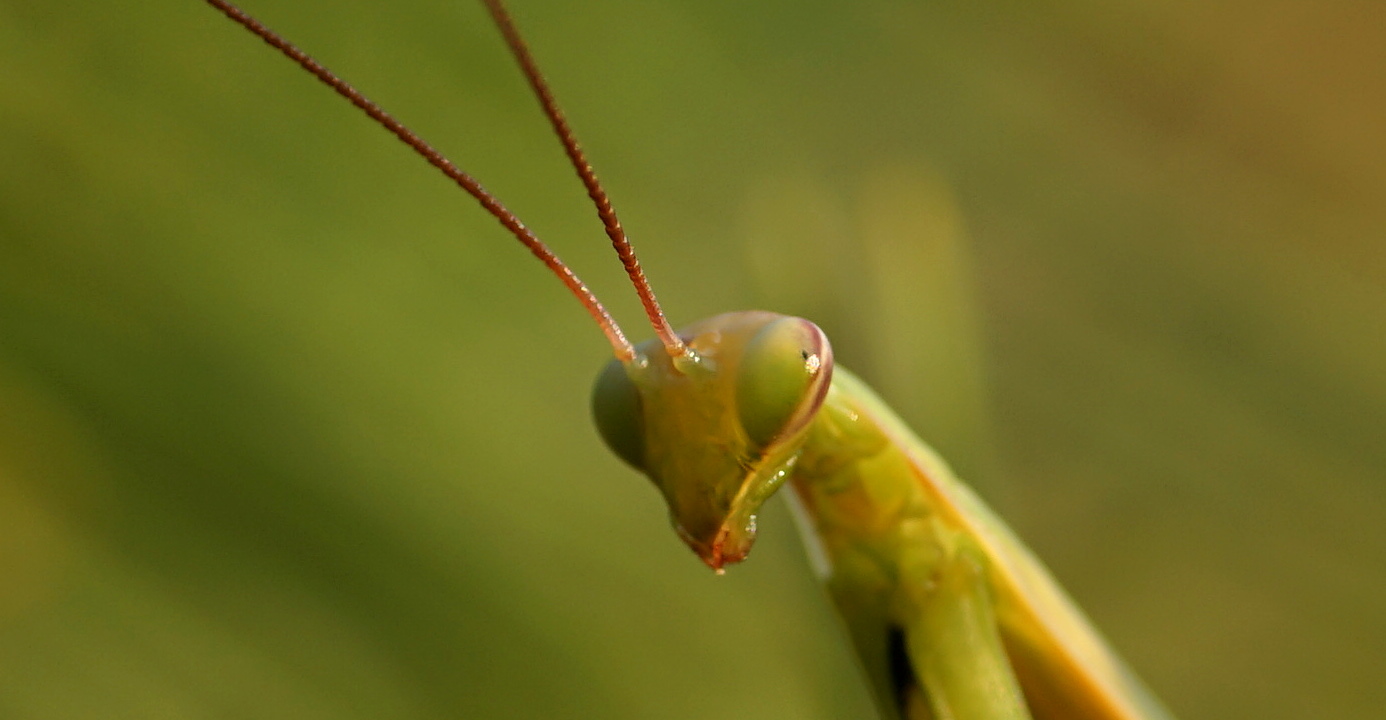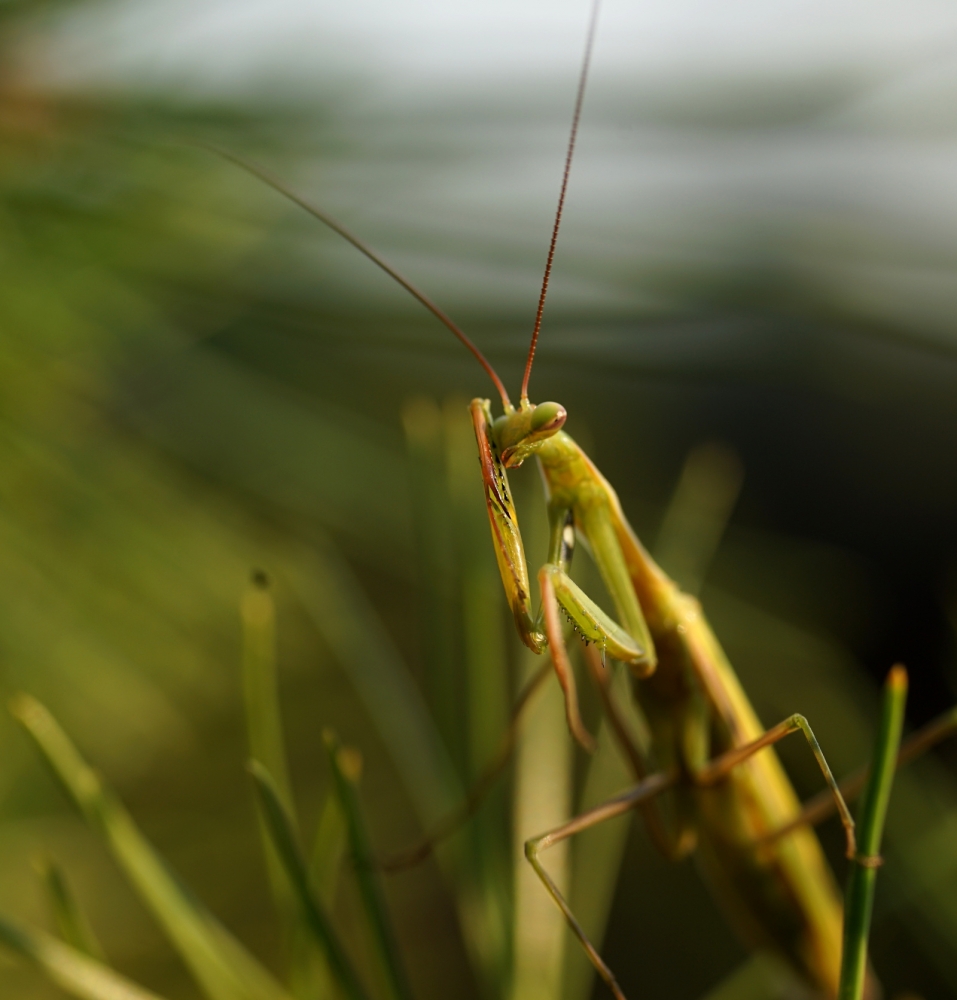| View previous topic :: View next topic |
| Author |
Message |
coase

Joined: 08 Aug 2016
Posts: 99
|
 Posted: Sat Oct 07, 2017 6:40 pm Post subject: Vivitar Series 1 90/2.5 macro "Bokina" Posted: Sat Oct 07, 2017 6:40 pm Post subject: Vivitar Series 1 90/2.5 macro "Bokina" |
 |
|
coase wrote:
After much patience, I have finally obtained a slightly worn but otherwise functional Bokina at a nice price to complement my Kiron-built Vivtar macro and Tamron SP 90/2.5.
It is good indeed.
And macro 1:2 is perfectly adequate for the butterfly and flower pics I like to take. For true macro, the Kiron and various 50/55mm lenses do fine.
 |
|
| Back to top |
|
 |
uddhava


Joined: 22 Aug 2012
Posts: 3074
Location: Hungary
Expire: 2021-06-21
|
 Posted: Sat Oct 07, 2017 8:21 pm Post subject: Posted: Sat Oct 07, 2017 8:21 pm Post subject: |
 |
|
uddhava wrote:

I can see why it is called "Bokina." |
|
| Back to top |
|
 |
jamaeolus


Joined: 19 Mar 2014
Posts: 2935
Location: Eugene
Expire: 2015-08-20
|
 Posted: Sat Aug 11, 2018 5:20 pm Post subject: Posted: Sat Aug 11, 2018 5:20 pm Post subject: |
 |
|
jamaeolus wrote:
Lovely shots. My coworker pointed out a praying mantis. Which I captured, his (her?) release was conditional on providing modeling service (heh, heh). I used my insect macro technique where I pre-condition the insect into a cold state (put the bottle they are in in the refrigerator for 1/2 hour or so), which provides a bit longer for photos as it takes them a little while to warm up and flee. While waiting for the bug to cool I set up the tripod and get the background all arranged then fetch the bug.
These are taken at the 2nd stop (3.2?) not wide open as the DOF is too thin for this type of photo. Some minor tweeks in GIMP, boosting contrast and brightness, which is how 99% of my photos get manipulated. These are all taken with A7ii in natural light in early morning, filtered through a high thin layer of forest fire smoke. We have been lucky so far as the fires have not really seriously adversely affected us here in Eugene.





_________________
photos are moments frozen in time |
|
| Back to top |
|
 |
Musashichan


Joined: 18 Nov 2015
Posts: 96
|
 Posted: Sat Aug 11, 2018 6:39 pm Post subject: Posted: Sat Aug 11, 2018 6:39 pm Post subject: |
 |
|
Musashichan wrote:
As a naturalist, before a photographer ; i'm afraid of what i have understood from your "technique"...
You take out the insects from their environnement to put them into your fridge to cool them down ; to be able to take them after that ????
Please tell me this is not real when most of real naturalist photographers tend to minimise as much as possible their impact and manipulation to the environnement and scenery of the shots...and of course, never ever never ever touch or manipulate the subject ; even more when it's an animal. Everywhere, in every magazine and nature board, there is pretty much always a manifest to invit every photographer to take care of the scene BEFORE thinking of the shot.
Seems that we are back in the 70s...
_________________
Visit my website : http://www.vintagephotography.fr
Flikr : https://www.flickr.com/photos/60427575@N08/ |
|
| Back to top |
|
 |
jamaeolus


Joined: 19 Mar 2014
Posts: 2935
Location: Eugene
Expire: 2015-08-20
|
 Posted: Sat Aug 11, 2018 7:54 pm Post subject: Posted: Sat Aug 11, 2018 7:54 pm Post subject: |
 |
|
jamaeolus wrote:
I'm not a "naturalist" (whatever that is). Just an avid amateur photographer, that likes manual focus lenses. If I had photographed where found I would have a concrete pillar as a background. The animal was NOT harmed. It was released into my backyard when I finished the shoot. A far better hunting ground for it than the concrete jungle where it was captured. So please take your holier than thou attitude and bugger off.
_________________
photos are moments frozen in time |
|
| Back to top |
|
 |
kryss


Joined: 13 Sep 2009
Posts: 2169
Location: Canada
Expire: 2017-09-18
|
 Posted: Sat Aug 11, 2018 9:18 pm Post subject: Posted: Sat Aug 11, 2018 9:18 pm Post subject: |
 |
|
kryss wrote:
Second that..   naturalist? I think he misspelled and meant Nutcase. naturalist? I think he misspelled and meant Nutcase.
_________________
Do not trust Atoms....they make up everything. |
|
| Back to top |
|
 |
poilu

Joined: 26 Aug 2007
Posts: 10471
Location: Greece
Expire: 2019-08-29
|
 Posted: Sun Aug 12, 2018 1:12 am Post subject: Posted: Sun Aug 12, 2018 1:12 am Post subject: |
 |
|
poilu wrote:
| Musashichan wrote: |
As a naturalist, before a photographer ; i'm afraid of what i have understood from your "technique"...
You take out the insects from their environnement to put them into your fridge to cool them down ; to be able to take them after that ????
Please tell me this is not real when most of real naturalist photographers tend to minimise as much as possible their impact and manipulation to the environnement and scenery of the shots...and of course, never ever never ever touch or manipulate the subject ; even more when it's an animal. Everywhere, in every magazine and nature board, there is pretty much always a manifest to invit every photographer to take care of the scene BEFORE thinking of the shot.
Seems that we are back in the 70s... |
  
_________________
T* |
|
| Back to top |
|
 |
sergtum

Joined: 14 Nov 2016
Posts: 735
|
 Posted: Sun Aug 12, 2018 6:01 am Post subject: Posted: Sun Aug 12, 2018 6:01 am Post subject: |
 |
|
sergtum wrote:
 |
|
| Back to top |
|
 |
Musashichan


Joined: 18 Nov 2015
Posts: 96
|
 Posted: Sun Aug 12, 2018 6:08 am Post subject: Posted: Sun Aug 12, 2018 6:08 am Post subject: |
 |
|
Musashichan wrote:
English is of course not my native language, so you'll be smart enough to understand that I may have not the right words...
In French we have that word, naturaliste, for nature lovers, in general, interested in all nature domains, botanic, zoology, geology etc. And first of all just a watcher, lover of all aspects of our world.
Even if you're r not a nature lover, even if you're not a ecologist you should understand that taking an insect from where it is, put it in your fridge to freeze it to be able to have your proper background is just a lack of respect for it. Plus there are huge chances to harm it, to change its perception, to make it completely lost afterward... You even think the place where you put it is better than the environment where you found it... I just can't believe I have to read this and explain this in 2018...
So I understand I will not change your respect, habits and perception, I'll just invite every photographer just to do the opposite of this.
Respect the scene you are taking, even the flowers, some can be rare and fragile. My last works are on orchids and you would not believe how much it's complex and fragile, even a small change in their environment can ruin the reproduction for years... Don't interact with the animals, even insects which are very fragile and sensitive. Move them expose them to predators, some are ground territorial such as mantis (and butterflies, dragonflies, many bugs) so they'll just be lost and exposed.
You want a subject to be easy to take? Wake up early and find them on their home plants, it will in addition learn you some biology about them...
Butterflies covered with mist in the morning are easy to take and pictures are just wonderful. Just please respect the subject as you would do with a human being, or the picture will have just no sens...
_________________
Visit my website : http://www.vintagephotography.fr
Flikr : https://www.flickr.com/photos/60427575@N08/ |
|
| Back to top |
|
 |
martinsmith99


Joined: 31 Aug 2008
Posts: 6943
Location: S Glos, UK
Expire: 2013-11-18
|
 Posted: Mon Aug 13, 2018 5:50 am Post subject: Posted: Mon Aug 13, 2018 5:50 am Post subject: |
 |
|
martinsmith99 wrote:
Handbags at 10 paces.
It's good to see that not much has changed around here.    
_________________
Casual attendance these days |
|
| Back to top |
|
 |
miran


Joined: 01 Aug 2012
Posts: 1364
Location: Slovenia
|
 Posted: Mon Aug 13, 2018 6:18 am Post subject: Posted: Mon Aug 13, 2018 6:18 am Post subject: |
 |
|
miran wrote:
Mantises are quite difficult to photograph because the eye isn't very sharply defined and so it's difficult to focus on it. You often end up with something else in sharp focus when you actually wanted to focus on the eye. But at least they are very common. Go out in the field and you can find hudreds to practice on. 
_________________
my flickr stream |
|
| Back to top |
|
 |
e6filmuser

Joined: 12 Nov 2010
Posts: 588
Location: Reading UK
|
 Posted: Mon Aug 13, 2018 8:26 am Post subject: Posted: Mon Aug 13, 2018 8:26 am Post subject: |
 |
|
e6filmuser wrote:
On the last day of our holiday in Corsica in 2014, I found this mantis on the steps up to our accommodation. Fearing it would be trodden on, I placed it in a potted bush adjacent to the (pinkish) hotel wall. It obliged by waiting for me to fetch my camera and posing.
Olympus EM-1 (manual mode), Kiron 105mm macro, TTL flash, hand-held.


_________________
Dedicated to using manual focus lenses with digital. Equiped for photography from macro to panoramic & from ultra-wide to extreme telephoto. Mostly shooting outdoor macro. Experienced entomological taxonomist. Some knowledge of mushrooms. |
|
| Back to top |
|
 |
e6filmuser

Joined: 12 Nov 2010
Posts: 588
Location: Reading UK
|
 Posted: Mon Aug 13, 2018 8:41 am Post subject: Posted: Mon Aug 13, 2018 8:41 am Post subject: |
 |
|
e6filmuser wrote:
| Musashichan wrote: |
As a naturalist, before a photographer ; i'm afraid of what i have understood from your "technique"...
You take out the insects from their environnement to put them into your fridge to cool them down ; to be able to take them after that ????
Please tell me this is not real when most of real naturalist photographers tend to minimise as much as possible their impact and manipulation to the environnement and scenery of the shots...and of course, never ever never ever touch or manipulate the subject ; even more when it's an animal. Everywhere, in every magazine and nature board, there is pretty much always a manifest to invit every photographer to take care of the scene BEFORE thinking of the shot.
Seems that we are back in the 70s... |
I am probably more of a naturalist then photographer and am interested mainly in showing my subjects (mostly close-ups/macro) in their natural environment. I disapprove of too much "gardening" to remove foliage, although I will remove the occasional blade of grass which would be OOF between the lens and the subject. I sometimes pick up a caterpillar from our concrete path (not its natural habitat) and place it on foliage for photography, then returning it to some suitable garden vegetation.
I don't have a big problem with chilling the insects but I chose not to do so. Neither do I go in search of dew-covered specimens in the early morning.
_________________
Dedicated to using manual focus lenses with digital. Equiped for photography from macro to panoramic & from ultra-wide to extreme telephoto. Mostly shooting outdoor macro. Experienced entomological taxonomist. Some knowledge of mushrooms. |
|
| Back to top |
|
 |
|
|
|
You cannot post new topics in this forum
You cannot reply to topics in this forum
You cannot edit your posts in this forum
You cannot delete your posts in this forum
You cannot vote in polls in this forum
|
